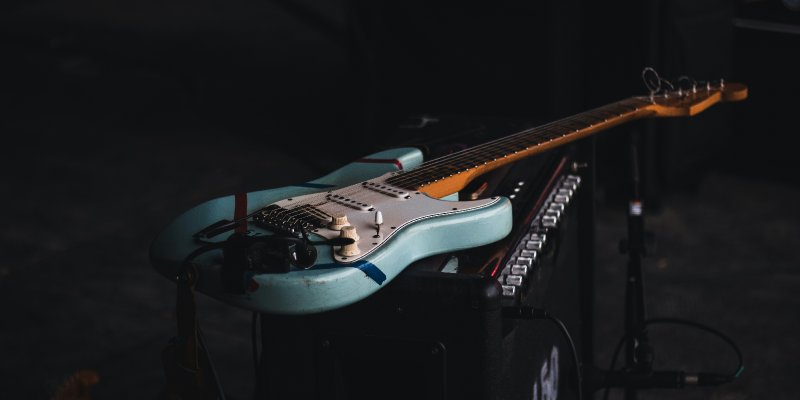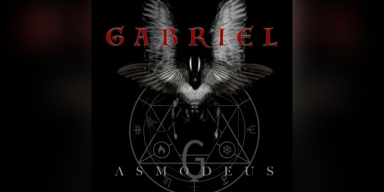
Photo by Simon Weisser on Unsplash
Metal Guitar Technique - Octave Displacement
By Shawn Leonhardt for Guitar Tricks and 30 Day Singer
If your solos and arpeggios are getting boring one way to spice them up is to make larger note jumps. The only problem with this is making sure you pick the right note so that it sounds good. By picking the same note in a different octave we can spice our shredding up and find some new approaches. Here is one of the best online guitar lessons on using octave displacement in metal guitar playing.
Know Your Intervals
While this guitar lesson is for playing metal guitar one of the best things you can do is sit down at a piano, digital keyboard, or app on your phone. You don’t have to learn to play piano but it is a major help to see the notes all laid out. The guitar is tuned in standard as EADGBE which means it is mostly in fourths except for the G-B which is a third. This alone makes it so it’s hard to see patterns and intervals so first we will look at the keys.
In Western music we move by semitones, each fret on a guitar or key on a piano are half steps apart. Pick a starting note and play the next beside it, this is called a minor second and it has a sad or even menacing quality. Now play 2 semitones up and you will hear it is a major interval. There are 12 steps all together as there are 12 notes and the best sounding intervals are the 4, 5, and octave (or 8) which are called perfect. This chart shows each of the intervals and the number of semitones to get there.
Perfect
Unison 0
Minor 2nd 1
Major 2nd 2
Minor 3rd 3
Major 3rd 4
Perfect 4th 5
Tritone 6
Perfect 5th 7
Minor 6t 8
Major 6th 9
Minor 7th 10
Major 7th 11
Octave 12
Most metal, rock, and blues will use an underlying music bed of the 1 and 5 perfect interval, these make up power chords . On top of that metal shredders will play notes with more major, minor, and tritone flavors to give the music its heavy and exotic vibe. Notice on a piano that these 12 notes repeat across the span, normally melodies in popular music stay in one octave and do not make big jumps. However this can get boring and repetitive fast so we use octave displacement (it is also known as dispersion) to come up with new ideas.
What Is Octave Displacement
Once you are familiar with the intervals on the keys you can start finding them on your guitar. Normally when you learn guitar you stick to guitar scales and arpeggios close by, it is also common to invert guitar chords in a different order. Instead of playing a C major as C-E-G you can also play it as E-G-C and G-C-E to spice it up a little bit. After that the only way to add variety is usually by extending the chord, which may not work if it alters the qualities too much.
Another potential way to add variety is to use notes from different octaves. Instead of using a C from the 4th octave try jumping down to the 3rd. Next play an E from the 4th octave and maybe the G at the 5th. Octave displacement is simply changing the same note for one on another octave. There are no specific rules for it except usually we only jump across one octave at a time.
Now it may seem like octave displacement is going to work every time because you are simply replacing the same notes right? Unfortunately it never works out that easy and can require trial and error. It is best not to use tabs at first when learning as it is excellent practice for learning the guitar fretboard notes . If you want to master your notes, find them by listening or with a tuner. Ear training and interval study will help you make leaps in your study and guitar skill.
How to Shred with Octave Displacement
The one nice aspect of the guitar fretboard is that it is stacked in a way that makes octave displacement easier than on a piano. On keyboards we have to make huge jumps but on the guitar the other octave notes can be right above or below on the next string. Start simple with a 12th fret A minor chord, simply play the notes one at a time as an arpeggio. The notes for A minor are A C E and initially it will sound nice but not very interesting.
Now look for other notes that are in different octaves, the A at the 14th fret of the G string is the same octave as the A at the 10th fret of the B string. You can play that other A but it is not displacement. Now look at the A at the 12th fret of the A string and with a tuner we can see it’s an A3 and an octave lower. Next we can find a lower octave C at the 10th fret of the D string and we can finally end on the regular E octave at the 12th fret of the E string.
It sounds a little different than the original but still works, next try a scale that you know well up the fretboard. Instead of following the normal intervals, change it up, if the next note rises, then go the opposite way and descend. If it is tedious and hard to do this, good, it will help reinforce the notes in your memory. Listen to what works and what doesn’t and try another octave if not. If any of this is a bit over your head, there are great guitar lessons for beginners online, like these , to help you brush up on some basics.
Another great thing about this technique is that it will help you stretch your fingers. Notice when we do this sometimes we are no longer in nice little box patterns. The more our fingers have to jump around the better you will get at speed across the board. Just remember that like all metal guitar techniques it requires slow and deliberate movements at first. Do it perfectly before increasing your speed and be patient.
Octave displacement is the simple process of using the same note but at a lower or higher pitch. The music theory is the easy part here, the hard part is the jumps and finding what displacement works. Keep studying your intervals as they are essential to nailing the emotion of music. If you practice intervals, inversions, and octave dispersion your solos and melodies will take on a new form and be more creative than the usual arpeggios and scales!
Reviews - Interviews - Promo - Radio Play
Contact zach@metaldevastationradio.com












